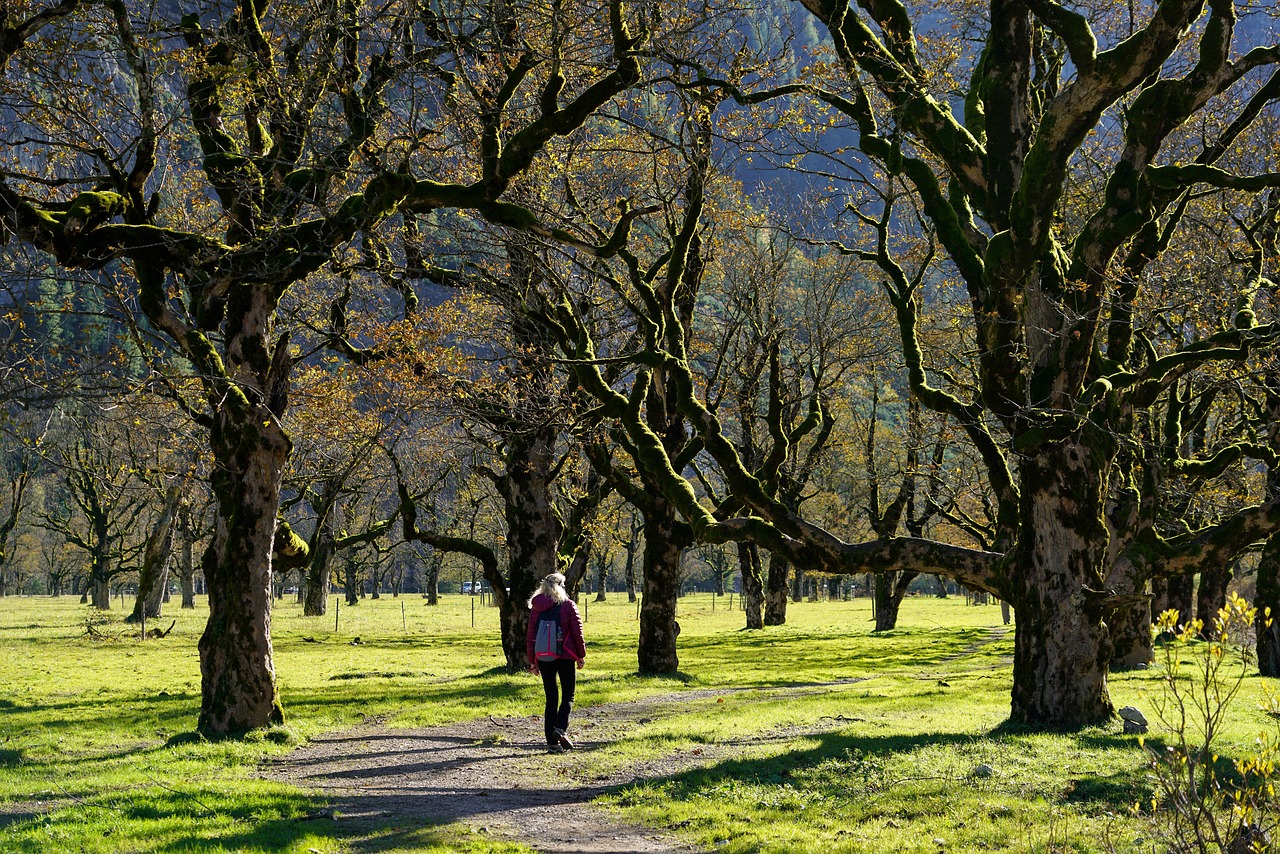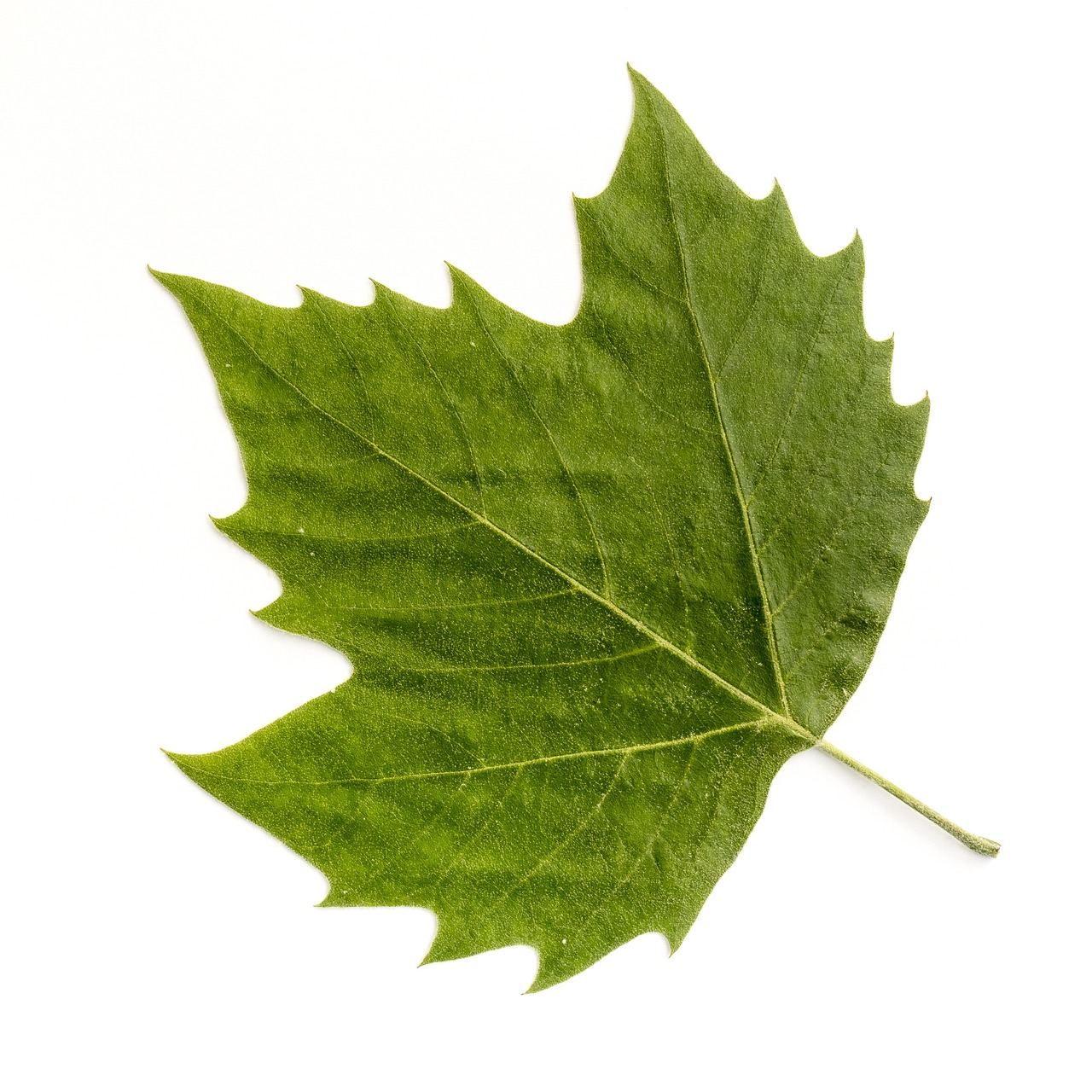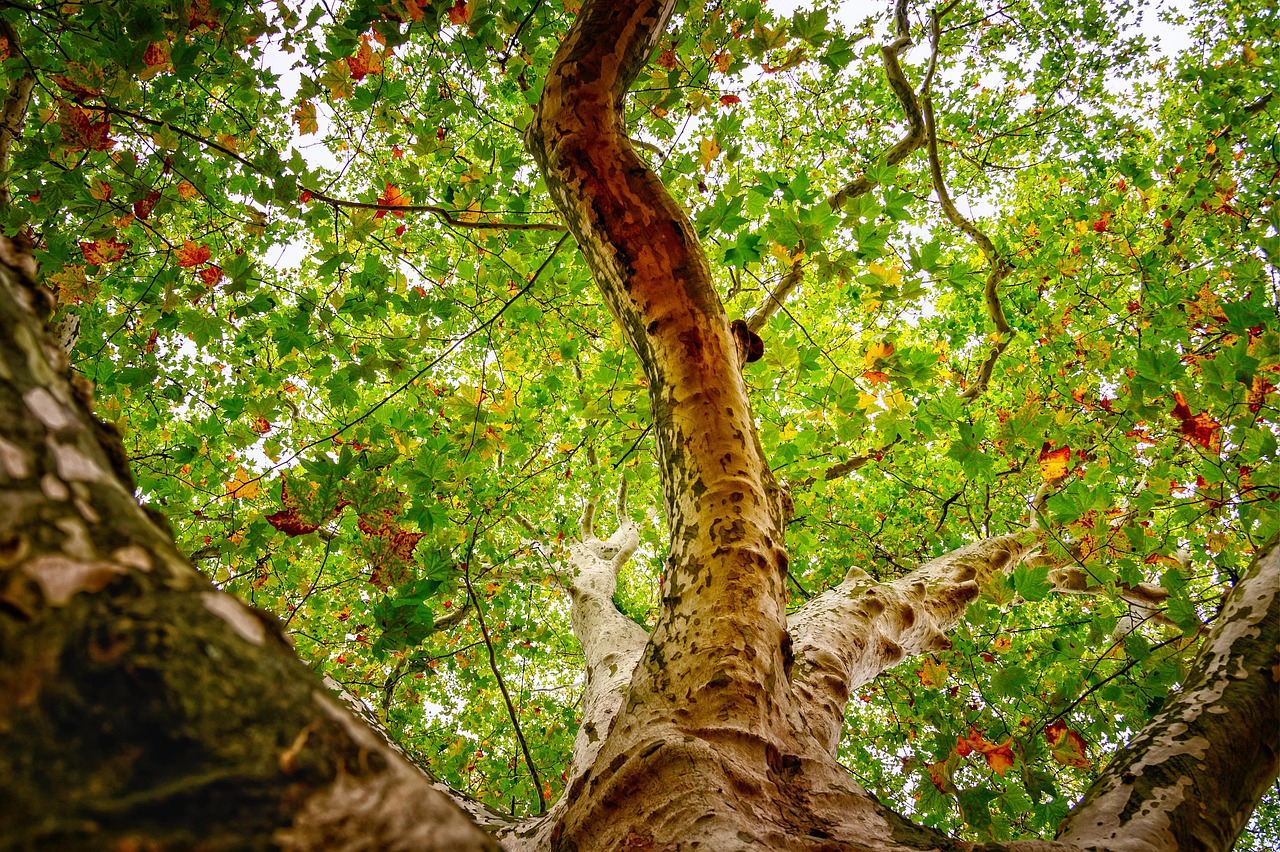Sycamore trees are easily identifiable by their distinctive bark, large leaves, and unique seed balls. Their bark is often mottled with patches of green, white, and brown, while their broad, lobed leaves can reach up to 12 inches in width. The tree also produces round seed clusters that hang in drooping clusters.
Understanding Sycamore Trees

Sycamore trees, belonging to the genus Platanus, are among the largest deciduous trees in North America. Known for their impressive size and striking appearance, they can grow up to 100 feet tall and boast a wide canopy that provides ample shade. The most common species in the United States is the American sycamore (Platanus occidentalis), which thrives in various soil types and is often found near water sources.
The sycamore tree is not only valued for its aesthetic qualities but also for its ecological benefits. It serves as a habitat for various wildlife species and plays a role in controlling soil erosion. Additionally, sycamores are known for their rapid growth rate, making them a popular choice for landscaping and reforestation projects.
Key Identifying Features
Identifying a sycamore tree involves looking closely at several key characteristics:
- Bark: The bark of the sycamore is one of its most distinctive features. It peels away in thin flakes, revealing a greenish-white inner bark that gives the tree a mottled appearance.
- Leaves: Sycamore leaves are large, typically measuring between 5 to 12 inches across. They have a palmate shape with 3 to 5 lobes and exhibit a glossy green color during the growing season.
- Flowers: The flowers are small and inconspicuous, appearing in clusters during early spring before the leaves fully emerge.
- Fruit: The sycamore produces round seed balls, about 1 inch in diameter, which hang down in drooping clusters. These seed balls contain numerous seeds that are dispersed by the wind.
Habitat and Growth Conditions
Sycamore trees thrive in moist, well-drained soils, often near rivers and streams. They prefer full sun but can tolerate partial shade. These trees are adaptable to various environmental conditions but may struggle in extremely dry or compacted soils. The following table summarizes the ideal growth conditions for sycamores:
| Growth Condition | Ideal |
|---|---|
| Soil Type | Moist, well-draining |
| Sunlight | Full sun to partial shade |
| Water Needs | Moderate to high |
Understanding these characteristics can greatly assist in recognizing sycamore trees in various landscapes. Observing their unique bark patterns and leaf shapes can help even a novice tree enthusiast identify them with confidence.
With their majestic presence and vital role in ecosystems, sycamore trees continue to be cherished by communities across North America. Their ability to adapt to different environments further emphasizes their significance and relevance in both natural and urban settings.
Growth Habits of Sycamore Trees
Sycamore trees exhibit distinct growth habits that contribute to their majestic stature and ecological importance. Understanding these habits is crucial for proper identification and appreciation of this species.
Growth Rate and Longevity
Sycamores are known for their rapid growth rate. Under optimal conditions, they can grow up to 2 to 3 feet per year. This vigorous growth allows them to reach their full height, which can be between 75 and 100 feet, within a few decades. Additionally, sycamores have a long lifespan, often living for 200 years or more when not subjected to disease or environmental stressors.
Root System
The root system of a sycamore tree is extensive and plays a vital role in its growth. Here are some characteristics of the root system:
- Deep Roots: Sycamores develop deep taproots that help anchor the tree firmly in the ground.
- Lateral Roots: They also produce wide lateral roots that spread out to absorb water and nutrients effectively.
- Adaptability: The root system allows sycamores to thrive in various soil types, making them resilient in diverse environments.
Ecological Importance
Sycamore trees contribute significantly to their ecosystems. They offer various benefits that support wildlife and improve the environment.
Wildlife Habitat
Sycamores provide habitat and food for numerous wildlife species. The large canopy offers shelter for birds, while the seeds attract squirrels and other small mammals. Additionally, the tree’s bark is home to insects, which in turn support larger predators.
Soil Erosion Control
The extensive root system of sycamores helps stabilize soil along riverbanks and shorelines. This characteristic is vital for preventing soil erosion, especially in areas prone to flooding. Their ability to thrive near water sources also aids in maintaining healthy riparian zones.
Carbon Sequestration
Like all trees, sycamores play a role in carbon sequestration. They absorb carbon dioxide from the atmosphere and store it in their biomass. This process helps mitigate climate change by reducing greenhouse gases.
Cultural Significance
Beyond their ecological roles, sycamores hold cultural significance in many communities. They are often featured in folklore and art, symbolizing strength and endurance. In various regions, sycamore trees are planted as memorials or landmarks due to their impressive size and longevity.
Historical Uses
Historically, the wood of the sycamore tree has been valued for its workability and durability. Here are some traditional uses:
- Furniture Making: Sycamore wood is used in crafting furniture due to its attractive grain and strength.
- Musical Instruments: The wood has been used to make various musical instruments, valued for its acoustic properties.
- Canoe Construction: Indigenous peoples have historically used sycamore wood for making canoes.
Pest and Disease Resistance
While sycamore trees are generally robust, they can be susceptible to certain pests and diseases. Awareness of these issues is essential for maintaining healthy trees.
Common Pests
Some of the pests that may affect sycamore trees include:
- Sycamore Lace Bug: This insect can cause leaf discoloration and damage.
- Scale Insects: These can affect overall tree health by sucking sap from leaves.
Disease Concerns
Common diseases affecting sycamores include:

- Anthracnose: A fungal disease that causes leaf spots and premature leaf drop.
- Canker Diseases: These affect branches and trunks, leading to dieback if not treated.
Regular monitoring and proper care can help mitigate these issues, ensuring sycamore trees remain a valuable part of the landscape.
Landscaping and Aesthetic Use of Sycamore Trees

Sycamore trees are not only ecologically significant but also widely appreciated for their aesthetic qualities. Their impressive size and unique features make them popular choices in landscaping projects. Understanding how to effectively incorporate sycamores into various outdoor spaces can enhance visual appeal and provide numerous benefits.
Landscape Design Considerations
When planning a landscape that includes sycamore trees, several factors should be taken into account:
- Space Requirements: Given their large size, sycamores require ample space to grow. It is essential to consider their height and spread when planting, ensuring they are not too close to buildings, power lines, or other trees.
- Soil Quality: The soil should be well-draining and rich in organic matter. This supports healthy growth and helps the tree resist diseases.
- Light Conditions: Sycamores thrive in full sun but can tolerate some shade. Positioning them in areas with adequate sunlight will promote optimal growth.
Benefits of Incorporating Sycamores
Integrating sycamore trees into landscapes provides numerous advantages:
- Shade Provision: The broad canopy offers significant shade, making them ideal for parks, playgrounds, and residential gardens.
- Aesthetic Appeal: With their distinctive bark and large leaves, sycamore trees add visual interest throughout the seasons.
- Wildlife Attraction: Planting sycamores encourages biodiversity by attracting various birds and insects that rely on the tree for habitat and food sources.
Seasonal Changes and Their Impact
Sycamore trees exhibit notable seasonal changes that enhance their landscape value. Understanding these changes can help in planning for aesthetic effects throughout the year.
Spring
In spring, sycamores emerge with fresh green foliage, creating a vibrant backdrop against the still-bare branches of other trees. The flowers appear early in the season, although they are not particularly showy, contributing to the overall ecological function of the tree.
Summer
During summer, sycamores provide abundant shade, making them popular spots for relaxation. Their large leaves create a lush canopy, offering refuge from the heat. This is also when the seed balls begin to form, adding an interesting texture to the tree.
Autumn
As autumn approaches, sycamore leaves typically turn a beautiful yellow-brown before dropping. This seasonal transformation creates a striking visual as the leaves carpet the ground. The contrast of the bark against the fallen leaves also adds to the aesthetic appeal.
winter
In winter, sycamores reveal their unique bark patterns as leaves fall off. The mottled coloration of the bark becomes more prominent, offering visual interest during a time when many other trees appear bare and lifeless. Additionally, the structure of the tree provides shelter for various wildlife species seeking refuge from harsh weather conditions.
Maintenance Tips for Sycamore Trees
To maintain healthy sycamore trees in a landscape setting, regular care is necessary. Implementing proper maintenance practices can ensure long-term health and vitality.
Watering Requirements
Sycamores prefer consistently moist soil, especially during dry periods. Regular watering is critical during the initial years after planting. Established trees typically require less frequent watering unless there is prolonged drought.
Pruning Practices
Pruning is essential for maintaining shape and health:
- Timing: The best time to prune is during late winter or early spring before new growth begins.
- Techniques: Remove dead or damaged branches and thin out crowded areas to promote good airflow and light penetration.
- Avoid Over-Pruning: Sycamores have a natural shape that should not be excessively altered.
Pest and Disease Management
Regular monitoring for pests and diseases is crucial in maintaining sycamore health. If infestations are detected early, appropriate treatments can be applied to prevent further damage.
By understanding these aspects of sycamore tree care and characteristics, landscapers and homeowners can maximize their benefits while enjoying their beauty throughout the seasons.
Additional Uses of Sycamore Trees

Beyond their aesthetic and ecological value, sycamore trees have a variety of practical applications. Their wood is particularly sought after in various industries due to its quality and characteristics.
Wood Characteristics
Sycamore wood is known for several key characteristics:
- Durability: The wood is hard and resistant to wear, making it suitable for furniture and cabinetry.
- Workability: Sycamore wood can be easily shaped and finished, allowing for intricate designs in woodworking.
- Appearance: The wood has a fine, even texture with a light color that can be stained or finished to enhance its beauty.
Modern Applications
In contemporary settings, sycamore wood is used in various products, including:
- Flooring: Its durability makes it a popular choice for hardwood flooring.
- Musical Instruments: The wood is sometimes used in the manufacture of instruments like drums and piano cases.
- Crafts and Turned Items: Sycamore is favored by artisans for creating bowls, pens, and decorative items.
Environmental Considerations
As urban areas continue to expand, the role of sycamore trees in the environment becomes increasingly important. Planting these trees can contribute positively to urban ecology.
Air Quality Improvement
Sycamores help improve air quality by absorbing carbon dioxide and releasing oxygen. Their large leaves capture dust, pollutants, and particulate matter from the air, contributing to cleaner urban environments.
Stormwater Management
The extensive root system of sycamores aids in stormwater management. By absorbing excess rainwater, they help reduce runoff and the risk of flooding in urban areas. This capability is vital in maintaining healthy landscapes and preventing erosion.
Climate Adaptation
As climate change continues to affect ecosystems, sycamore trees demonstrate resilience to varying environmental conditions. Their adaptability to different soil types and moisture levels makes them valuable in restoration projects and reforestation efforts.
Final Thoughts
Sycamore trees are remarkable specimens that offer a combination of beauty, ecological benefits, and practical applications. Their distinctive bark, large leaves, and impressive size make them easy to identify in various landscapes. With their rapid growth rate and longevity, sycamores provide shade and habitat for wildlife while enriching local ecosystems.
Their wood serves multiple purposes, from furniture making to musical instruments, further emphasizing their value beyond mere aesthetics. As communities increasingly recognize the importance of trees in urban planning and environmental sustainability, sycamores stand out as an excellent choice for landscaping and ecological restoration.
Incorporating sycamores into urban settings not only enhances visual appeal but also contributes to improved air quality and stormwater management. By understanding the key features and characteristics of sycamore trees, individuals can make informed decisions about planting and caring for these majestic trees, ensuring their presence for generations to come.
